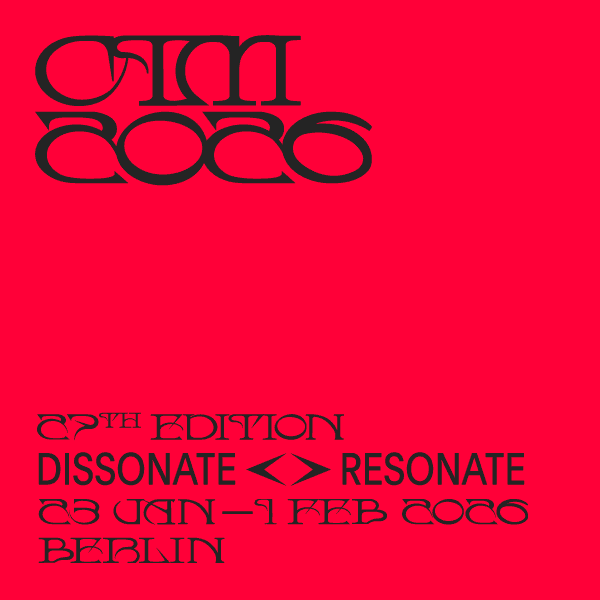Tivoli Symphony Orchestra, Wednesday, September the 7th
Siegfried Naumann
The compositions of Siegfried Naumann display the depth of his technical diversity, tempered by a broad spectrum of mood. Crisp, tight phrases woven into undulating expanses of developing form compose the texture of much of his chamber and orchestral work. Naumann places focus on polyphony, melodic variation and rhythmic diversity.
Naumann (b. 1919 in Malmo) began his professional studies at the State Academy of Music in Stockholm, and then entered Accademia Nazionale di St. Cecilia, in Rome. As a conductor, Naumann has learned from Wilhelm Furtwangler and Hermann Scherchen, among others. Naumann's book on conducting was published in 1992.
In a carrier that gained him appointments as conductor of the Ornskoldsvik Music Society, and later of the Gavleborg Orchestral Association, Naumann founded the Musica Nova ensemble in 1962 to concentrate on the contemporary repertoire.
Scania
Siegfried Naumann composed Scania, Op. 56, for alto voice and orchestra, in 1992. The piece borrows its lyrics from a poem by Anders Osterling about the Dalbyhage area, near Lund. "Upon returning home to my Skane," says Naumann," I get great pleasure setting the verse of local poets to music."
The piece is conceived as a poem for two equally worthy entities, singer and orchestra. The tonal material is "modified" dodecaphony, with special emphasis on the parametric tonal color.
Olli Kortekangas
Musical tradition is challenged by the works of Olli Kortekangas, but he also questions the dogma of modernism. The Finnish composer (b. 195s) explores melodic trails by using new-modes of composition and a panoply of styles. Kortekangas often adds theatrical or visual elements to a musical foundation that he describes as pure and simple.
A co-founder of the contemporary music society Korvat Auki, in 1977, he shared the group's objective, "to promote and make known the music of our time." His talent was truly recognized when the public experienced Kortekangas's half-hour chamber opera, Short Story, in 1980. This piece, like later works, demonstrated the composer's sense of ambiguity, parody, the absurd and humor.
Concert Piece for Clarinet and Cello
A few years ago, Kari Kriikku and Anssi Karttunen commissioned a number of small duets for their instruments from a handful of Finnish composers. I knew already that the two gentlemen were extremely capable musicians, but the overall concert, to which I contributed the miniature Iscrizione, was a pleasant surprise: the unfriendly combination of clarinet and cello turned out to be quite smooth and interesting. I had to continue investigating the possibilities of the combination, and at the same time see how well it would work in a concert setting. The commission from Tapiola Sinfonietta couldn't have come at a more appropriate time. I started writing the concerto at the end of last summer, and this January it was completed. It is, of course, dedicated to Kari Kriikku and Anssi Karttunen. O.K.
Pelle Gudmundsen-Holmgreen
Pelle Gudmundsen-Holmgreen (b. 1932) has long been one of Denmark's foremost composers. He studied theory, music history and composition at the Royal Danish Academy of Music in Copenhagen, and taught composition at the Academy of Music in Aarhus.
From the compositional launching pad of Bartok and Stravinsky, Gudmundsen-Holmgreen ascended into serialism for several years, before establishing his personal orbit in the mid-1960s with the chamber works Frere Jacques (1964) and Recapitulations (1965). He describes his music since then as radical reductions, repetitions, simple or grotesque figures in polyrhythmic patterns, often combined with a rash use of instrumental color."
Some of Gudmundsen-Holmgreen's better-known recorded works are: Symphony, An-tiphony (1977) for symphony orchestra (DaCapo DCCD 9010), awarded the 1980 Music Prize of the Nordic Council; Mirror Pieces (1980) for clarinet, cello and piano (Paula PACD 57), and Triptykon (1985) for percussion and orchestra (BIS CD 256).
Tivoli Symphony Orchestra
The orchestra continues an unbroken tradition going back to the foundation of Copenhagen's Tivoli Gardens (1843) and can be heard every summer as part of the entertainment offered in the amusement park.
During the winter period, the orchestra works as The Copenhagen Philharmonic Orchestra, a regional orchestra founded in 1965, and gives a large number of concerts in Tivoli Concert Hall and on Copenhagen's home island of Zealand. The orchestra's repertoire is varied and includes many first performances of contemporary music.
Kerstin Lundin Grevelius
Kerstin Lundin Grevelius started her professional career as a singer relatively late, having first taken her degree in dentistry. She received her vocal training primarily from Ingrid Maria Rappe, founder of the Vadstena Academy in Sweden.
In recent years, Grevelius has made soloist appearances with the conductors Eric Ericsson, John Frandsen, Vernon Handley, Laszlo Heltay, Neemi Ja'rvi, Okko Kamu, James Loughran, Helmut Rilling, Stig Westerberg and Dan-Olof Stcnlund.
She has sung with many orchestras in Denmark and abroad, including the London Sinfonietta, and the Malmo, Helsingborg, Aalborg, and Singapore symphony orchestras. She was guest soloist with the Lund Student Choir on its 1993 tour to Singapore, Australia and Indonesia.
Niels Thomsen
Niels Thomsen (b. 1945) began his musical career at 10 years of age with the world-famous Boys Guard at Copenhagen's Tivoli Gardens. Six years later, he commenced formal study1 with Ib Eriksson.
Thomsen went on to study in Rome and London, and concluded his studies at the Curtis Institute under Anthony Gigliotti, who was principal clarinetist with the Philadelphia Orchestra.
Before taking up his current position as head clarinetist with the Danish National Radio Symphony Orchestra in 1976, Thomsen served in a similar capacity with the regional orchestra of Southern Jutland and the Copenhagen Philharmonic.
Kim Bak Dinitzen
Six years ago, Kim Bak Dinitzen won both the 18th annual East and West Artists International Auditions in New York, and first prize for cello in the 35th annual Washington International Competition for Strings. This led to a successful debut at New York's Carnegie Hall, a recital at the Phillips Collection in Washington, D.C. and classical radio appearances in New York and Washington.
Dinitzen made his American concert debut in 1990, performing the Elgar Cello Concerto with the Savannah Symphony Orchestra in Georgia.
Dinitzen was born in Denmark, and studied with Erling Blondal Bengtsson in Copenhagen and Ralph Kirshbaum in London. A featured soloist with the Danish Radio, Aarlius and Tivoli symphony orchestras, he has won several prestigious awards for musicians in Denmark, including the Victor Borge Prize.
In Europe, Dinitzen has performed as a soloist and chamber musician in major cities, including London, Copenhagen, Stockholm, Berlin, Warsaw, Salzburg and Rome. He records regularly for Danish and Swedish state radio. In 1990, he won third prize in the International Caspar Cassado Cello Competition in Florence.
Kim Dinitzen, who made his London debut at Wigmore Hall in 1991, now lives in London, where he is a member of the Chamber Orchestra of Europe.
Frans Rasmussen
Frans Rasmussen has conducted many Scandinavian orchestras in a repertoire spanning from symphonies through oratorios and masses to opera and musicals. He has made many recordings, notably his ambitious project with the Canzone choir to record all of Niels W Gade's dramatic works.
So far, the Dane's recordings have been with Collegium Musicum and the Aarhus and Aalborg symphony orchestras. His version of Carl Nielsen's collected choral works won Rasmussen the "Grand Prix du Disque."
Frans Rasmussen studied at the Royal Danish Academy of Music under teachers such as Herman D. Koppcl, Arne Hammelboe and Jorgcn Jersild.
He is a frequent guest conductor with the Danish regional orchestras, particularly when newer works are to be performed. In 1991 he conducted the F.sbjcrg Ensemble on its Irish tour, and the Dutch ASKO Ensemble in concerts in Helsinki and Brussels. In the autumn of that year, he led the Danish National Radio Symphony Orchestra in the Danish first performance of Ligcti's Violin Concerto.
In 1993, Rasmussen returned after many years' absence to the Danish Royal Theatre to conduct the ballet Caroline Mathilde by Flemming Flindt and Maxwell Davies, and a new production of Brecht/Weill's Mahaqonny.
Gert Mortensen
Gert Mortensen's repertoire encompasses this century's greatest works for percussion, and his concerts are a fascinating display of musical expression, body language and rhythm.
Trained as a percussion soloist at The Royal Danish Academy of Music in Copenhagen, Mortensen (b. 1958) quickly became recognized as one of the leading concert percussionists in the world. Along with the composer Per Norgard and the conductor Simon Rattle, Mortensen studied gamelan music in Indonesia, and brought home a number of percussion instruments new to the European tradition.
Norgard and other leading Scandinavian composers such as Niels Viggo Bentzon, Sven-David Sandstrom and Poul Ruders have written works for the percussionist. His career includes solo and symphony concerts with several European orchestras, and TV and radio performances across Europe and in the United States, Japan and Australia.
One critic wrote that Mortensen's artistry springs from "the liberation of natural energy in a spectrum of primordial force, ecstasy, mysticism, meditation and the explosion of life."
On September 1, Gert Mortensen returned from a major concert tour of Italy, where he exclusively performed contemporary Danish music.

